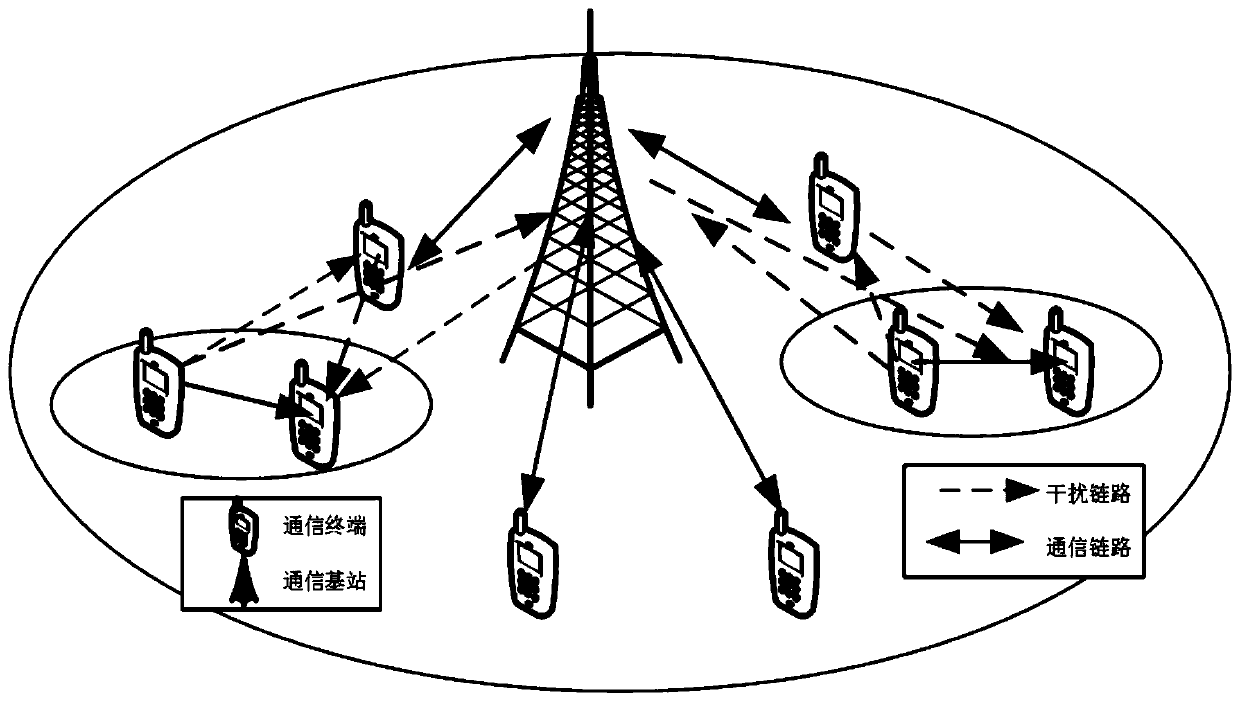D2D resource allocation method based on uplink and downlink spectrum joint multiplexing
A resource allocation and frequency spectrum technology, which is applied in the field of D2D resource allocation based on joint multiplexing of uplink and downlink spectrum, can solve the problem of not considering the impact of shared spectrum resources on the communication quality of cellular users, failing to make full use of spectrum resources, and failing to achieve network throughput. maximum etc.
- Summary
- Abstract
- Description
- Claims
- Application Information
AI Technical Summary
Problems solved by technology
Method used
Image
Examples
Embodiment Construction
[0070] The technical solution of the present invention will be further described in detail through the following specific embodiments. It should be understood that the specific examples described here are only used to explain the present invention, not to limit the present invention.
[0071] figure 1 It is a scene diagram of D2D resource allocation based on joint multiplexing of uplink and downlink spectrum. This scenario represents that in a single-cell system using frequency division duplex (FDD), m cellular users and n pairs of D2D users coexist, and the number of cellular users is far greater than the number of D2D pair users. Among them, the function of the base station is to allocate an uplink resource and a downlink resource to each cellular user, and it is assumed that the spectrum of the uplink and the downlink each account for half of the total spectrum. At the same time, since the number of cellular users is much larger than that of D2D users, the present inventi...
PUM
 Login to View More
Login to View More Abstract
Description
Claims
Application Information
 Login to View More
Login to View More - R&D
- Intellectual Property
- Life Sciences
- Materials
- Tech Scout
- Unparalleled Data Quality
- Higher Quality Content
- 60% Fewer Hallucinations
Browse by: Latest US Patents, China's latest patents, Technical Efficacy Thesaurus, Application Domain, Technology Topic, Popular Technical Reports.
© 2025 PatSnap. All rights reserved.Legal|Privacy policy|Modern Slavery Act Transparency Statement|Sitemap|About US| Contact US: help@patsnap.com



